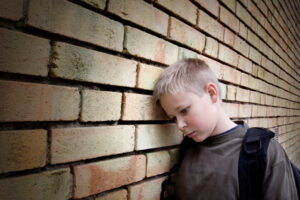Childhood and Adolescent Depression

Depressive disorders are classified into two main disorders, Major Depressive Disorder (MDD) which is often severe, reoccurs, is short in duration, and includes one or more Major Depressive Episodes; and Dysthymic Disorder (DD) which is typically less severe and lasts longer than one year in children and adolescents. The DSM-V-TR does not place depression in a separate diagnostic criterion for children. Children with depression may present with irritable mood, they may complain of feeling sick (have a belly ache, headaches, feel tired), avoid school, or cling to parents; while older children and teens may sulk, get into trouble, be negative, or feel misunderstood.
Children and adolescents with depression may demonstrate symptoms which are typically associated with adults, such as loss of interest or pleasure in things that were previously pleasurable; weight loss or gain; sleep disturbance; fatigue; feelings of guilt and/or worthlessness; concentration problems; suicidal ideation; and psychomotor agitation/retardation.
Consideration of life changes (e.g., the loss of a loved one) and other possible diagnosis should be considered prior to a diagnosis being made. As children age, depression appears to become more common and the ratio of female to male prevalence appears to increase.
Treatment of depression includes Cognitive Behavioural Therapy (CBT) which focuses on looking at how the child thinks about their life and events, and trying to help them engage in more realistic thinking patterns. Interventions may include but are not limited to psycho-education (teaching them about depression), cognitive restructuring, and relaxation training and should include involvement of the child/adolescent and parents. In some situations, medication may also be deemed necessary and a discussion with a medical professional is recommended.

